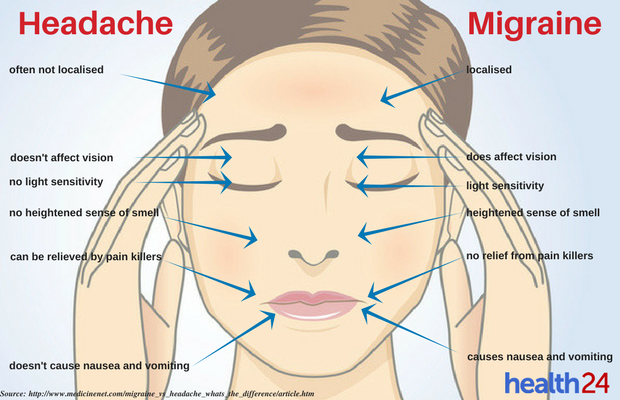By Josephat Chiparanyanga
MIGRAINE headaches are a primary headache disorder. By primary headache disorder we mean to say that the headache is originating from a problem in the head. Some headaches are caused by a problem elsewhere in the body for example you can have a headache that comes because you have pneumonia and we call these secondary headaches. Typically migraine headaches are unilateral meaning they mainly affect one side of the head at a time.
The incidence of migraine headaches is about 15 percent of the world population, which is about one billion people. They affect males and females equally but mainly they affect boys more than girls and elderly women more than elderly men.
When it comes to the causes of migraine, we say they are generally not known. There are postulated causes of migraine. For example it is postulated that they are genetic, they are caused by vasoconstriction and that they are a primary neurological cause. By genetic what we mean is that they run within families. If your father, aunt or sibling has or had it you have a higher chance of suffering from it as well. Vasoconstriction simply means that the arteries supplying blood to the part of the brain affected by migraine will be narrowing and blood supply as well as oxygen delivery is reduced ultimately resulting in the pain of migraine headaches. The primary neurological theory postulates that migraine headaches are caused by misfiring of some neurons (nerves) in the brain resulting in the persistent pain of migraine headaches.
Migraine headaches are phasic. What this means is that they don’t just come strong but move from a milder to a severe state. There are four phases of migraine. The first phase is called the prodromal phase. During the prodromal phase, you just feel irritable, depressed, at times you feel euphoric or elated. It lasts about two hours to two days. During this phase you won’t even know it’s a migraine headache. You can just think it’s a bad mood or you are just happy yet it’s actually the beginning of a migraine headache.
The second phase is called the aura phase. Usually during the aura phase you just have a feeling of impending doom. You could also have nausea or even vomiting and people do have some visual disturbances like poor eyesight or photophobia (a feeling that light is dazzling your eyes). You can get numbness of hands and feet or just a tingling sensation. This phase usually lasts up to an hour. About 30 percent of individuals who suffer from migraine do have an aura.
Pain phase comes after the aura phase. The pain is graded as moderate to severe on the pain score. Pain is graded from 0 to 10 on the pain score. Zero is no pain and 10 is the most painful pain you can experience. So with migraine headaches the pain is graded from 4 to 10 on the pain score. The pain is pulsatile in nature. This means that the pain is like you feel your heartbeat in your head. The pain phase lasts from 4 to 72hours. During this phase you are sure you have a migraine attack. The pain of migraine is debilitating, meaning it can affect your normal daily activities. It is also exacerbated by movement.
Lastly comes the postdromal phase. It lasts from hours up to a week. People develop different symptoms during the postdromal phase is variant. Some individuals feel depressed and some are elated. Rarely do people develop amnesia (loss of memory). At times people get a bit of confusion during the postdromal phase. After the postdromal phase usually everything gets back to normal.
Individuals that are prone to migraine do have what we call triggers. A trigger is something that causes a condition to start. With migraine headaches triggers include stress, light, sounds, smells, poor sleep, foods and medicines. So triggers differ with individuals. You need to identify your trigger and avoid it to minimise attacks.
To make a diagnosis of a migraine headache we mainly base on the history or description that you tell us. There are laboratories or radiological tests that can be done to make the diagnosis of migraine headaches. So if you have a severe unilateral headache that is triggered by light, stress etc suspect it could be a migraine headache. Nevertheless there are certain tests we do to rule out other causes of headaches or what we call differential diagnosis. We could do a full blood count to see if you are not anaemic (anaemia is a common cause of headaches). We can also do a CT scan of the head or a chest Xray to rule out secondary causes of headaches.
The management of migraine headaches is mainly in two ways. One we need to focus on preventative measures. You need to avoid your triggers to minimise the number of attacks and also to make sure you don’t get severe attacks. Secondly management is therapeutic. Therapeutic management is whereby we put you on medication to take away the pain. We can manage mild migraines with simple pain medications like paracetamol. If the pain is getting worse we might end up needing to give you stronger drugs like ergotamines like migril. Most of the time if you just take one pill the headache will go away.
Migraines can be chronic at times whereby someone is suffering from the migraine on almost a daily basis. In these cases we can put you on long term medication. People with chronic migraine also need to actively avoid triggers because at times the chronicity comes from the fact that the patient is continuously exposed to the same trigger and hence the migraine will not go away.
Remember a healthy you, a healthy me to a healthy world.
Dr Josephat Chiripanyanga is a Harare based medical doctor. He can be conducted at joechiripanyanga@gmail.com

